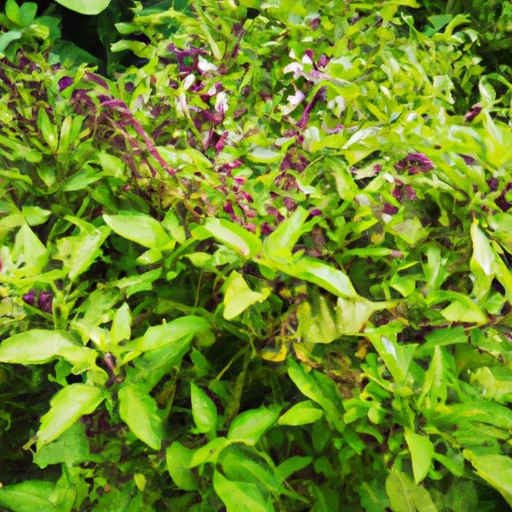Thai Basil
Description

Thai basil, known scientifically as Ocimum basilicum var. thyrsiflora, is a tropical herb that is widely used in Southeast Asian cuisine. With its distinctive anise-like flavor and a hint of spiciness, it has become a favorite across the globe for adding a unique twist to traditional dishes. Unlike common sweet basil often found in Italian cuisine, Thai basil stands out with its slightly sturdier leaves and purple-hued stems, making it not just a flavorful addition but also an aesthetically pleasing garnish.
Common uses
Thai basil is commonly used in a variety of dishes for its unique taste and aroma. It is often added to stir-fries, soups, curries, and salads. The herb is also a key component in the famous Thai dish Pad Thai and is frequently used as a fresh garnish to add a burst of flavor right before serving.
Nutritional value
Calories
Thai basil is low in calories, with approximately 22 calories per 100 grams (about 3.5 ounces).
Protein
It provides around 3.15 grams of protein per 100 grams.
Fat
Thai basil contains a minimal amount of fat, with roughly 0.64 grams per 100 grams.
Carbohydrates
Carbohydrates in Thai basil amount to about 2.65 grams per 100 grams.
Vitamins
Thai basil is an excellent source of vitamins such as vitamin A (providing 105% of the RDA per 100 grams), vitamin C, and vitamin K.
Minerals
It also contains essential minerals like calcium, magnesium, and iron.
Health benefits
Thai basil offers health benefits including anti-inflammatory and antioxidant properties, potentially reducing the risk of certain chronic diseases. It also aids in digestion and can contribute to cardiovascular health due to its high vitamin K content, which is important for blood clotting.
Potential risks
Although generally safe for consumption, Thai basil should be consumed in moderation. People who are allergic to other members of the mint family may also have allergies to Thai basil. Due to its vitamin K content, individuals on blood-thinning medications should monitor their intake to avoid any potential interactions.
Common recipes
Popular recipes featuring Thai basil include Thai Basil Chicken (Pad Krapow Gai), Thai Basil Beef, and Green Curry. It is also used in Vietnamese Pho and Spring Rolls.
Cooking methods
Thai basil can be used fresh or cooked. It is commonly added at the end of the cooking process to retain its flavor and aroma.
Pairing with other ingredients
Thai basil pairs well with a variety of ingredients including poultry, beef, seafood, fruits like mango and pineapple, and other herbs such as cilantro and mint.
Summary
Thai basil is a flavorful and nutritious herb that is integral to many Asian dishes. With its unique taste and health benefits, it is a versatile ingredient that can enhance a wide array of recipes. Whether used as a primary flavor or as a garnish, Thai basil is a delightful addition to any culinary creation.